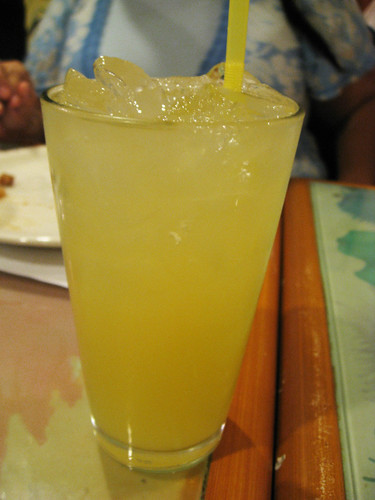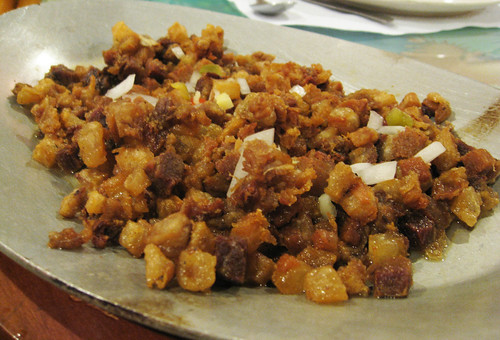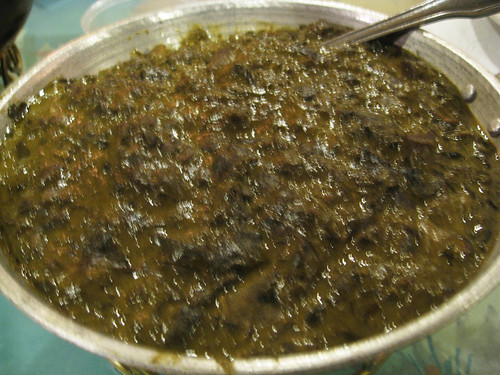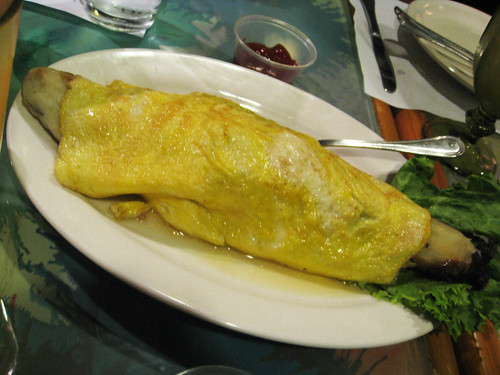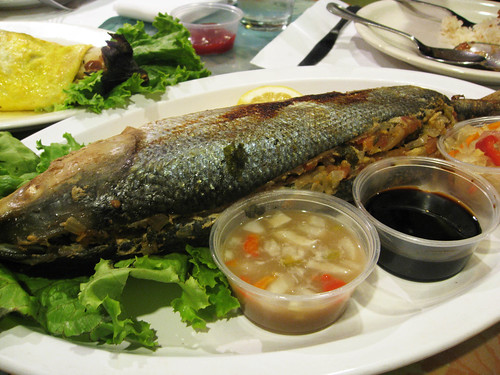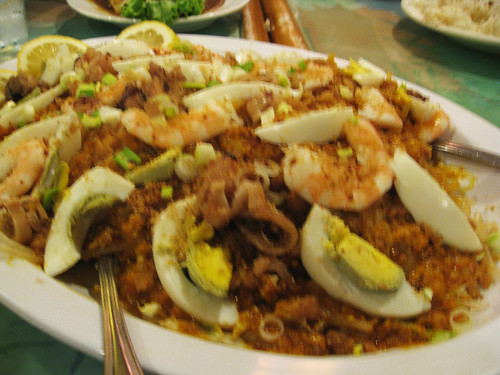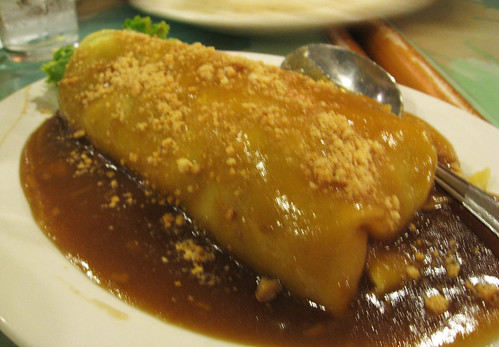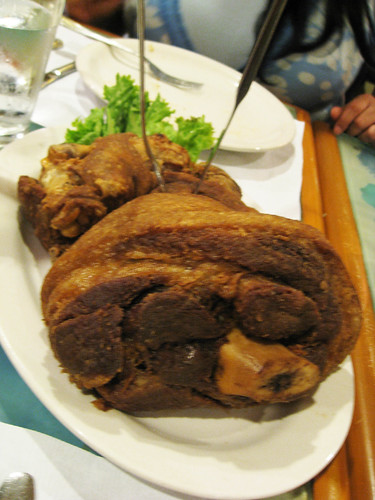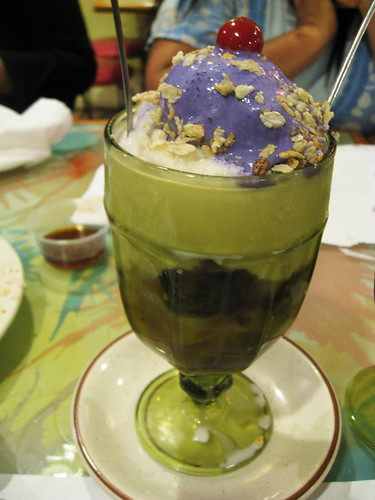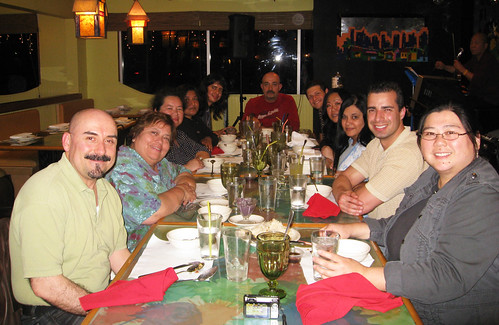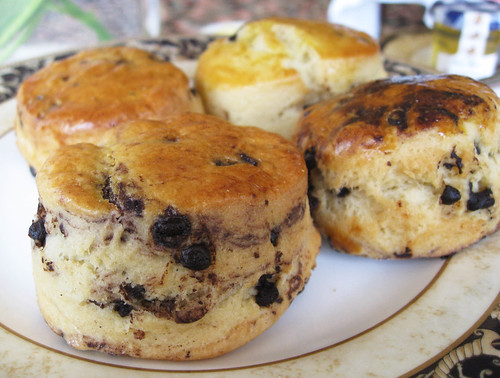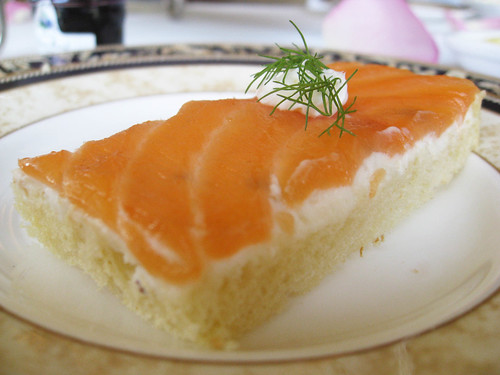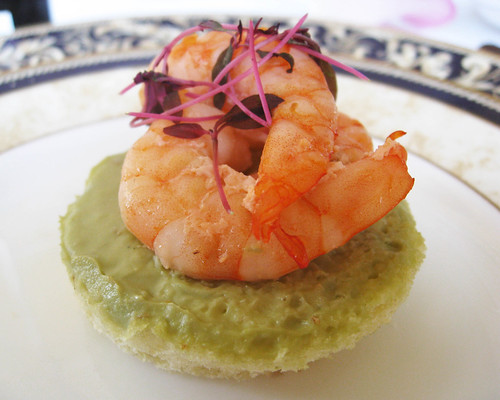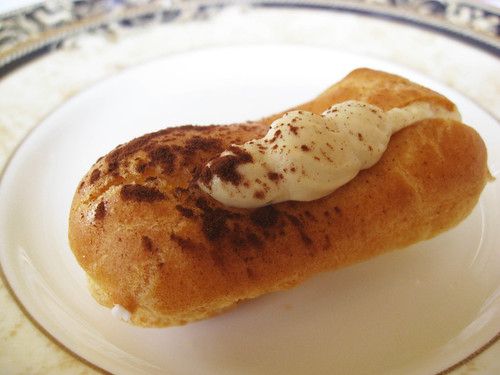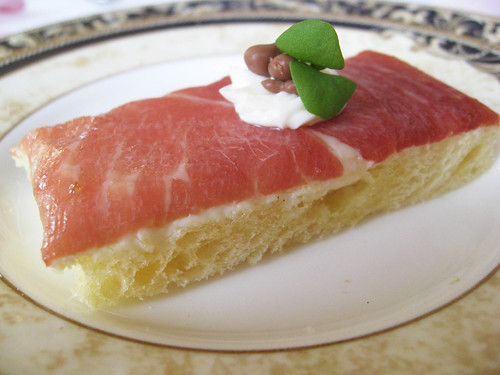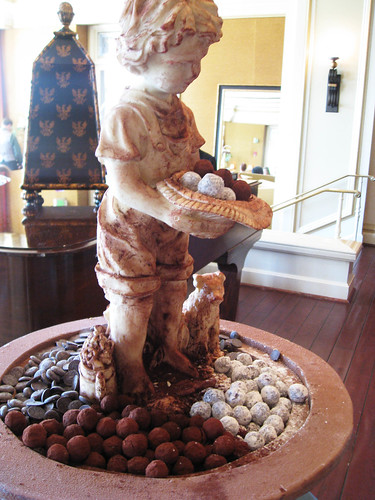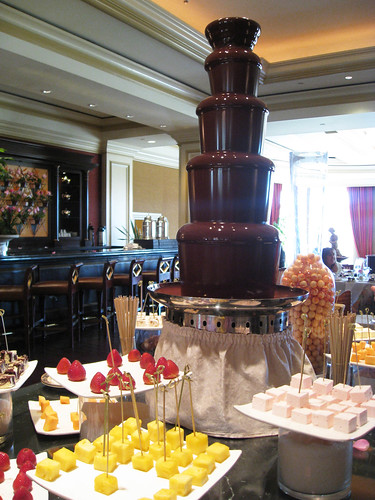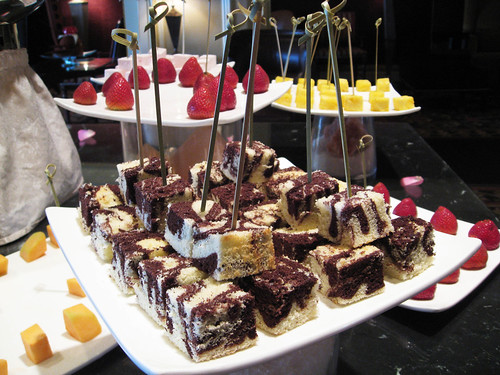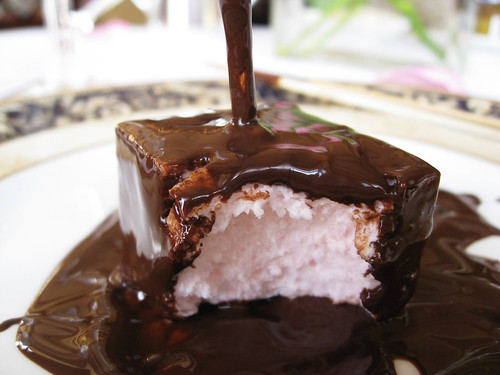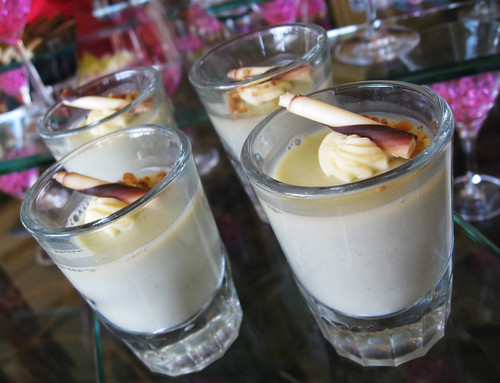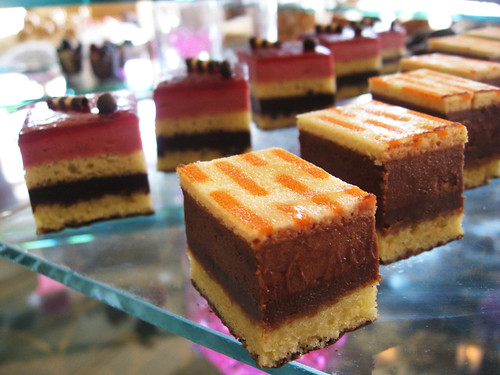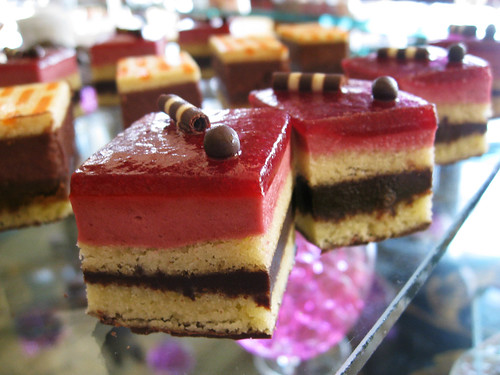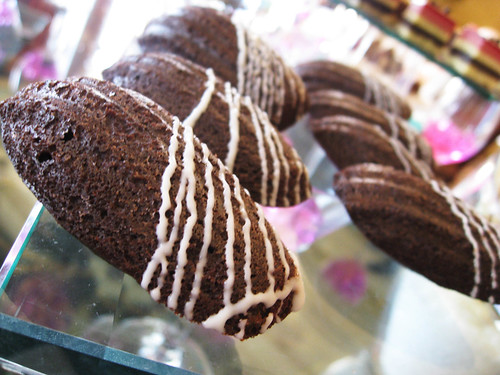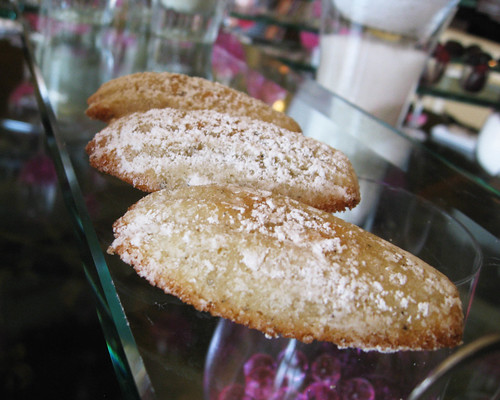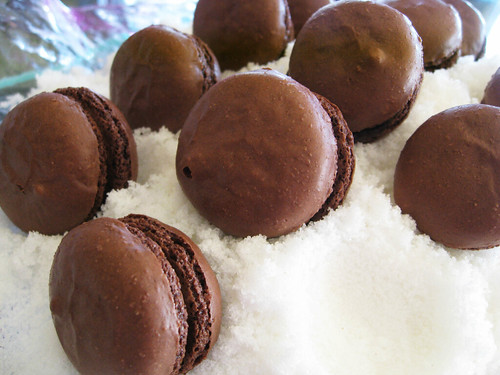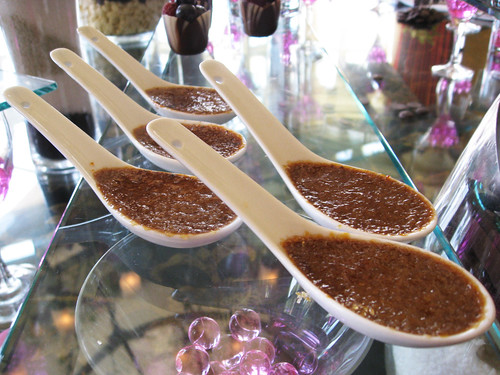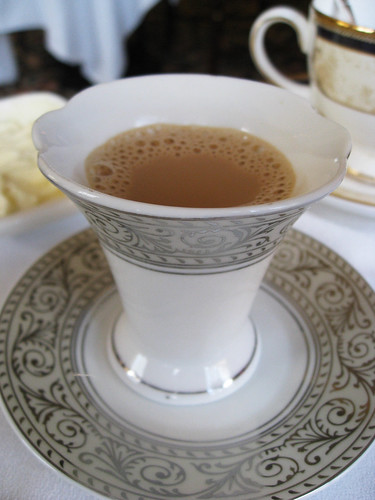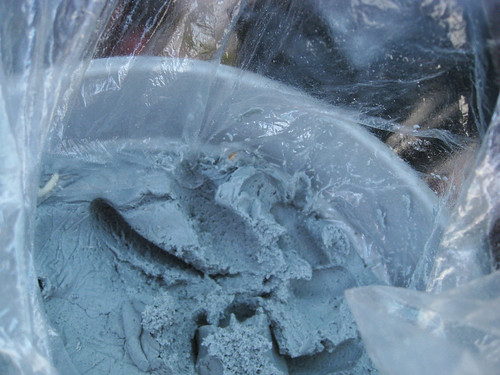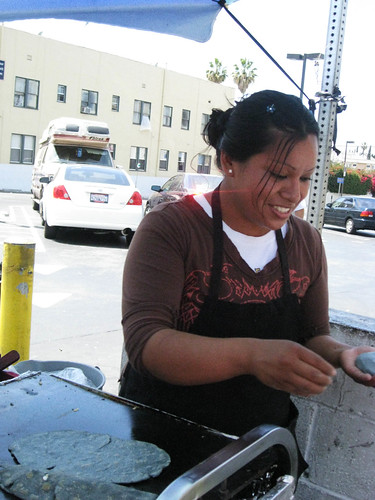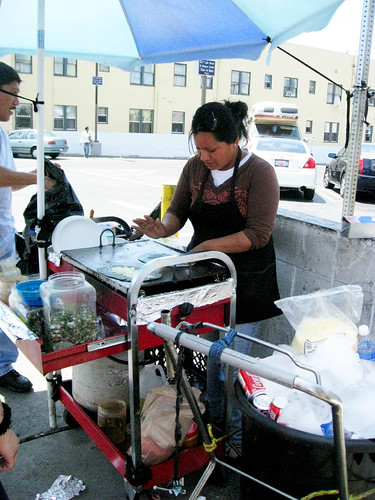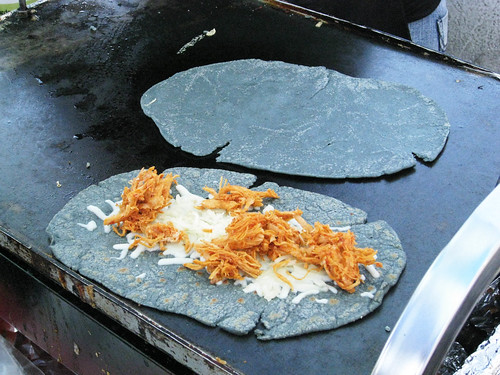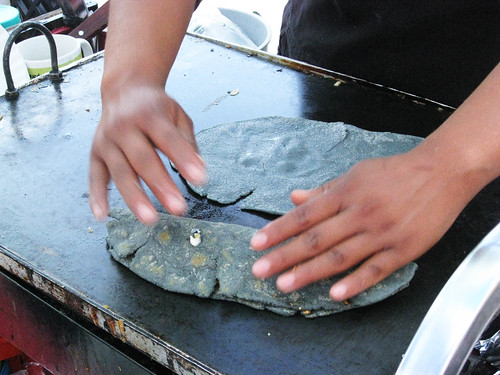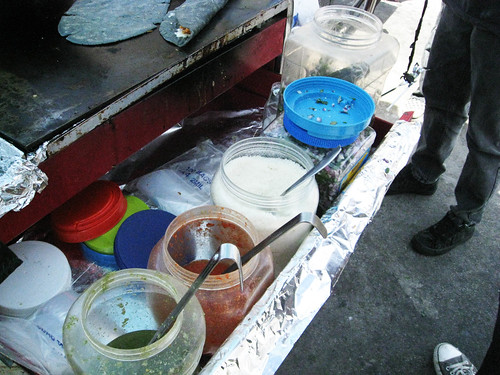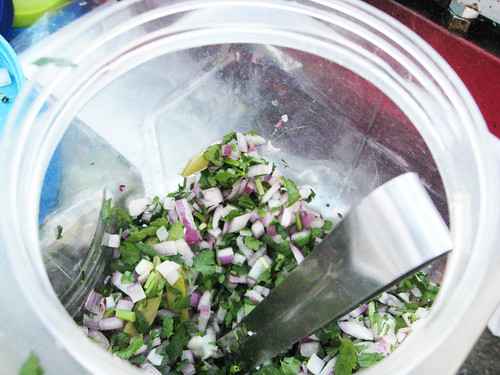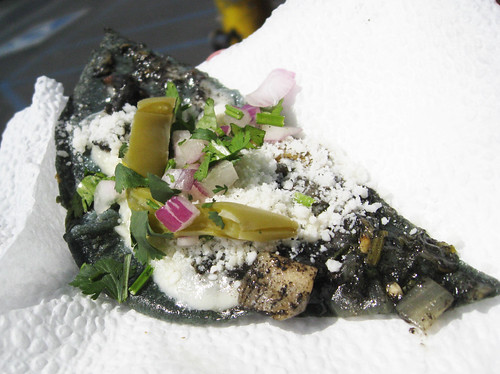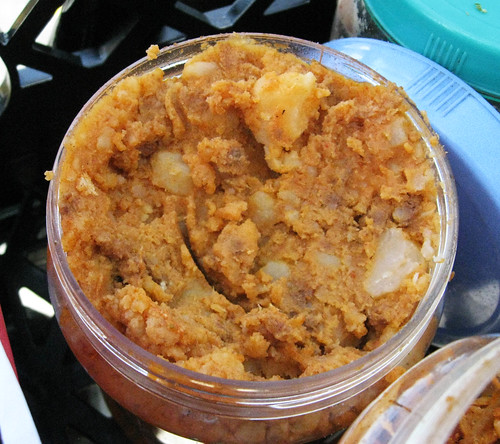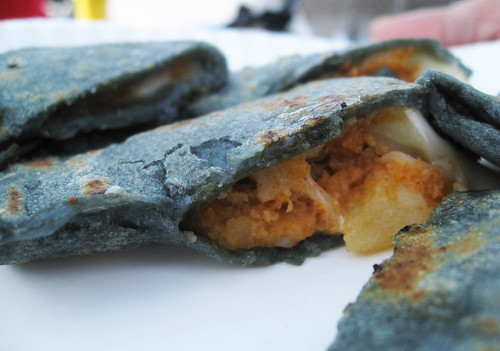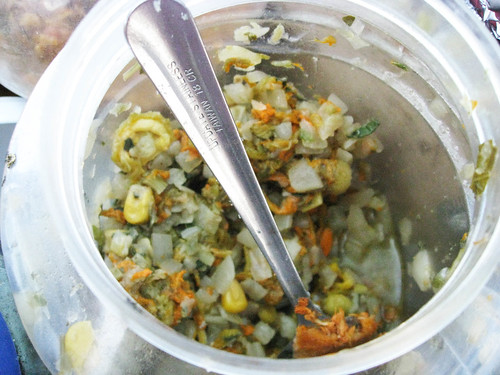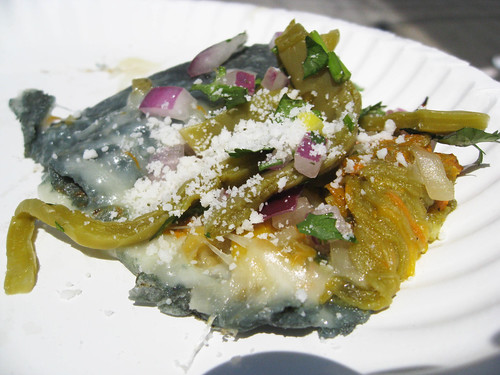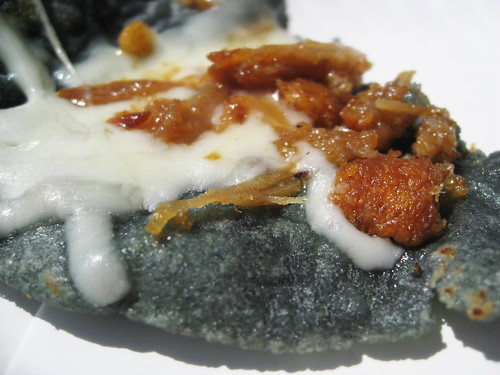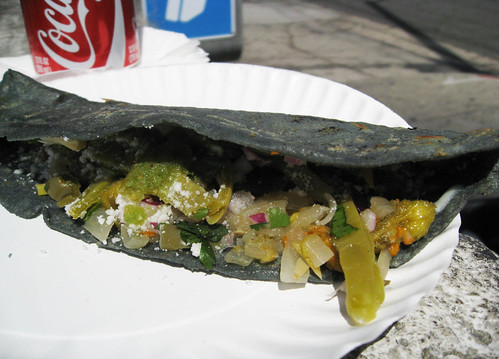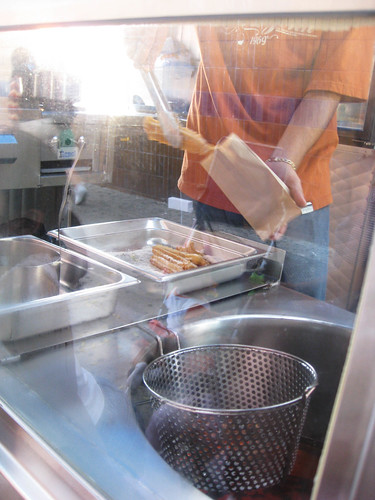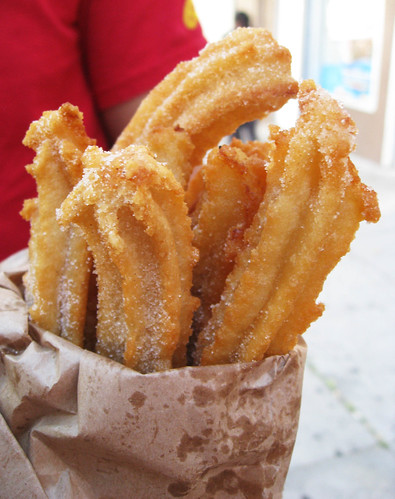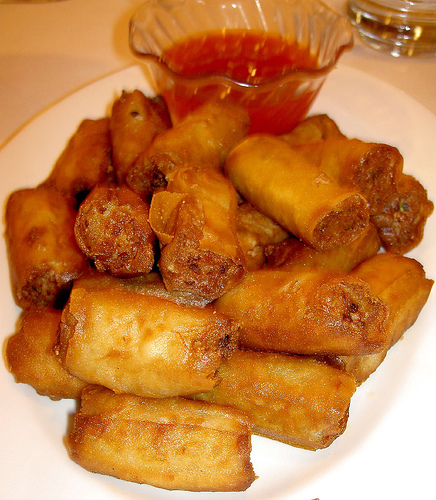
When it comes to Filipino food, most non-Filipinos can't seem to get past lumpia (egg rolls) and pansit (noodles). I think there are a few reasons why this is the case. First, Filipino food still hasn't really stepped into the mainstream simply because Filipino food is such a fusion and mish mash of influences from other countries that it's hard to pinpoint what Filipino food actually is.
Second, when non-Filipinos do encounter Filipino food, it's either through a potluck or they're invited to a Filipino house party. In a potluck scenario, lumpia and pansit are the usual choices because the flavors would be more appealing to the non-Filipino palate and these dishes also have a recognition factor since both dishes are similar to what is seen in Chinese cooking. When it comes to a house party, lumpia and pansit are definitely present as well as dishes that don't always require a lot of prep time aka a lot of fried dishes.
For me, what I love about Filipino food is that it truly is a global cuisine and it's because of the Southeast Asian, Latin and even American influences that truly give Filipino food its vibrancy. So for my Foodbuzz 24, 24, 24 proposal, I was going to plan a meal that would accomplish two things. One goal would be to introduce a cuisine that's very much under represented to a group of friends who truly haven't experienced Filipino food beyond lumpia and the second goal would be to introduce some dishes to them that would reflect a particular cultural influence. To set up this meal and to also give you some more information, I want to first give you some background about Philippines and how in a sense, our food tells our history as a country.
First, Philippines is a country that has a tropical climate divided into rainy and dry seasons with an archipelago with 7,000 islands. In fact, there are over 80 dialects in the Philippines with Tagalog being main language that allows the lines of communication to flow regardless of what province you hail from. The geography of the isles contains everything from mountains to central plains to coral reefs with seas touching the world’s longest discontinuous coastline along with a multitude of lakes, rivers, springs and brooks. When it comes to the population, there are over 120 different ethnic groups, all of whom live their lives, build houses, tell and write stories and most of all, prepare food in a lush tropical environment.
Chinese trade started in the Philippines in the 11th century, with many Chinese traders who ended up living in the Philippines and taking Filipino wives. This development resulted in Filipinos having Chinese origins, bloodlines and of course, resulted in major Chinese input into Filipino cuisine. This Filipino-Chinese cooking would use ingredients native to the Philippines, have Filipino names, but be cooked using Chinese techniques. Dishes like pansit are simply noodles, lumpia are fried eggs rolls and siopao are like the Chinese steamed filled buns called cha su bao. Most of these dishes were adopted across many different parts of the Philippines, but adapted based on what ingredients were locally available. For example, Pansit Malabon has oysters and squid since Malabon is a fishing city while Pansit Marilao is topped with rice crisps because Marilao is a city within the Luzon rice bowl.
The arrival of the Spaniards brought with them both Spanish and Mexican food influences, since a Viceroy from Mexico City was appointed by Spain to govern the Philippines and with him came Mexican workers. Various Viceroys ruled until 1821 when Mexico and Central America were able to achieve their independence from Spanish rule. Spain's rule lasted for 333 years and during this time period, it meant the production of food for an elite, nonfood-producing class, and a cuisine for which many ingredients were not locally available and had to be shipped into the Philippines
Filipino-Hispanic food now included new flavors and ingredients like olive oil, paprika, saffron, ham, cheese, cured sausages—and new names. Just as with Filipino-Chinese cooking, Spanish and Mexican and dishes were adapted and eventually became a part of modern day Filipino cuisine. For example, Spain has a custom of stuffing young roosters and turkeys for Christmas called Relleno. Filipinos adapted Relleno and applied it to chickens, and even to bangus, the silvery milkfish. Even the Mexican corn tamal turned Filipino, becoming rice-based tamales wrapped in banana leaves.
By the very virtue of the Philippines being part of Southeast Asia and that it shares similarities in climate, topography and geography with neighboring countries like Indonesia, Malayasia and Vietnam, it's easy to see that all these countries would breed similar cuisines and dishes. For example, the use of chili and coconut milk in dishes can be found in Indonesia, Malaysia and specifically, the Bicol region of the Philippines. Many Philippine desserts, particularly those made of rice and coconut are similar to those of Indonesia and Malaysia. Among these are biko and suman, sticky rice cooked with coconut milk and sugar and wrapped in banana or pandan leaves, bibinka, puto and kutsinta which are different types of rice cakes. Patis and bagoong, fermented fish or shrimp sauce, similar to those produced by Vietnamese and Thais, are used to flavor food when cooking and are served as sauces for a variety of dishes such as kare-kare or appetizers such as chopped green mangoes.
When the US took over the governing of the Philippines, the American influence consisted of Filipinos learning the ways of convenience, which included pressure-cooking, freezing, pre-cooking, sandwiches and salads, hamburgers, fried chicken and steaks and most of all, cooking with canned goods. Canned goods like Spam, corned beef and fruit cocktail started appearing in the Filipino kitchen, but even then we put our own spin on this convenient cuisine. For example, Spam would be sliced, fried and eaten with eggs for breakfast. Corned beef would sauteed with onions and garlic while our version of fruit cocktail would include jackfruit (langka), coconut (buko) and palm nuts (kaong). Even hot dogs were sliced and added to spaghetti.
Add to the above other cuisines found in the country along with other global influences: French, Italian, Middle Eastern, Japanese, Filipino food today really tells the story of Philippine history. So given all these outside influences, it's sometimes difficult to ascertain what Filipino food really is. On the one hand, Filipino cuisine is simply food that comes from the land, sea, field and forest, but it also includes dishes and culinary techniques learned from countries like China, Spain, Mexico, the US and more. What makes this food uniquely Filipino? Simply, it's because of the Filipino's openness to new foods, their ability to re-work these new dishes using local ingredients as well adapting them to fit the Filipino palate and finally, being able to accept and absorb them into our food culture.
So for my Foodbuzz 24, 24, 24 meal, a group of 11 of us feasted on 15 dishes, which included steamed rice and garlic fried rice plus there were a selection of 3 different Filipino beverages to choose from at Barrio Fiesta in Eagle Rock, CA. By the way, as you read the descriptions of the foods and beverages we dined on, I'll try to link the menu item name to an online recipe so that you can try the dish out for yourself at home.
Let's talk beverages first. As mentioned, there were 3 choices. I was the only one who ordered the Gulaman At Sago drink. It's a drink that sometimes listed under the dessert section on Filipino restaurant menus, but it's not so sweet that you can't have it as part of your meal. It's a popular drink, especially during the hot summer months in the Philippines and its ingredients are simply water, sugar, gulaman (agar-agar) and sago (tapioca pearls). It's similar to a Japanese boba drink, but its flavor will remind you of brown sugar.
Buco is basically young coconut juice which is drunk on its own or poured into a glass with young coconut pieces. Coconut juice (or water) is prevalent in most Southeast Asian as well as Latin American and South American countries, so there's nothing uniquely Filipino about it, but still it's a refreshing drink.
The third drink was similar to a lemonade, but made using Calamansi, a small citrus fruit that is considered native to the Philippines, but also grown in other parts of Southeast Asia. Calamansi looks like a small tiny orange, but tastes like a combination of orange and lime. Basically, it's sweet and tart at the same time. Calamansi is a staple in the Filipino food culture. It's used for making marinades, mixed with soy sauce or fish sauce and used as a dipping sauce or made into a drink and generally speaking, could be a substitute for lemon or lime in most recipes.
For our appetizers, we shared Lumpia Shanghai and Sisig. Lumpia Shanghai as I already mentioned is a Chinese-inspired dish. Sisig means "to snack on something sour." In some cases, it refers to fruit that's dipped in vinegar and salt and in other instances, it refers to a certain way that meat and fish is prepared. Usually, the meat is marinated in a sour liquid like lemon juice or vinegar than seasoned with salt, pepper and other spices. In the past, Sisig was usually made from parts of the pig's head, liver or generally whatever is leftover from the pig. This is still done as home cooking or at more traditional Filipino restaurants. Modern Filipino restaurant versions of sisig is usually crunchy and chock-full of chicharon (pork rind) bits and sometimes seasoned with varying doses of chili peppers and calamansi juice. This was the version which we had at Barrio Fiesta. Another thing to note is that it's usually considered bar food and the fattiness of the pork goes really well with a bottle of beer (or two).
Next came our entrees. The first two entrees definitely showed a Malaysian and even a Thai influence in their use of coconut milk and even in spice factor. The spice factor is a bit unusual because Filipino food isn't considered a spicy cuisine. However, coconut milk inspired dishes like Bicol Express and the Laing sa Gata (taro leaves) can actually pack some heat due to the addition of chili peppers, depending on the cook. Both these dishes are part of Bicolano cuisine (from the area of Bicol in the Philippines) which is famous for its rich and spicy dishes that are mostly cooked using coconut milk called gata and spiced with a very hot, local variety of chili called siling labuyo. Bicol Express can be a pork or a mixed seafood dish that can include anything from fish to squid to mussels. The Barrio Fiesta version actually wasn't that spicy, but I've had it at other Filipino restaurants where it was.
When the Laing sa Gata came out, this was the first time any of my friends ever saw taro leaves prepared in this fashion. Actually, I think this was the first time any of them had ever eaten taro leaves. Just like the Bicol Express, this dish could have been spicier, but no one seemed to miss it. Quite a few commented on how it was very similar to an Indian dish known as spinach saag minus the spinach and the coconut milk. When it comes to this dish, my Mom had mentioned to me that if it's not prepared correctly, it'll actually make your mouth and throat itch. Thankfully, it was prepared well.
Two other dishes in our menu represented two different adaptations of Relleno, the Spanish tradition of stuffing young roosters and turkeys. One of the dishes was called Rellenong Talong, which is eggplant stuffed with ground pork and than wrapped inside an omelette. I also chose this particular dish to show different uses of eggplant, which is a popular vegetable in Filipino cuisine. When it comes to eggplant, we'll cut it and fry it or sometimes, we'll dip it in egg and than fry it. As a part of a recipe, you'll see it in Filipino dishes like Kare Kare and Pinkabet, both of which I'll talk about later on. Rellenong Talong is usually eaten with banana ketchup or regular ketchup.
The next Relleno dish was the Inihaw na Bangus or Stuffed Bangus. Bangus is a silvery milkfish that is very much a staple in the Filipino diet. One of the favorite ways to prepare it is to chop tomatoes and onions, squeeze calamansi over it and than stuff it in the bangus before grilling it. Similar to Vietnamese dining, it was accompanied by different dipping sauces that included soy sauce and a lemon, onion and carrot mixture where you can decide how much or how little to add to the fish for additional flavoring.
Another Chinese inspired dish was the Pansit Malabon, but this is unlike any Chinese noodle dish you may have ever encountered. Taking inspiration from the city of Malabon, which is a fish trading town, the basic ingredients for Pansit Malabon include hard boiled eggs, green onions, shrimp and fried pork skin. The basic ingredients for the sauce is made of shrimp juice, flour for thickening and atchuete oil. A definite Filipino twist on Chinese noodles.
Kare Kare is one of my favorite comfort foods and no matter how many versions I've tried at other Filipino restaurants, Mom's is always the best. The reason I included Kare Kare on the menu is that first, it's a very popular dish with Filipinos, but to also show that we have our own version of stews. Most people think of Filipino food as mostly fried foods, but there are actually quite a lot of dishes that are stews or have some kind of sabao. Sabao refers to the liquid in the dish that is spooned over your rice.
The ingredients that are in Kare Kare are primarily oxtail and assorted vegetables like green beans, eggplant and pechay (a Filipino cabbage) and cooked in a peanut butter sauce. There's a little bit of the Thai influence because of the use of peanuts as a sauce and at our meal, there was a comment on how Kare Kare reminded someone of an African Groundnut Stew. Kare Kare is also served with bagoong, which is a sauteed salted shrimp paste, similar to what's produced for Vietnamese and Thai cuisine.
Speaking of bagoong, while most bagoong is made up of shrimp paste, in other parts of the Philippines, the bagoong is more anchovy-based. Bagoong is used as an additional flavoring that you can add to already cooked dishes and in some cases, various fruits. I grew up eating bagoong smeared on mango slices.
Bagoong can also be a component in a recipe as in Pinakbet. Pinakbet can either be just vegetables or vegetables and pork. At Barrio Fiesta, it was served with pork and it's a dish not hard to miss since you actually see the bagoong flecks on the vegetables as well as both the sabao and the pork taking on bagoong's pink coloring. Pinakbet might not be the dish for you, if you're not into strong, pungent shrimp flavoring.
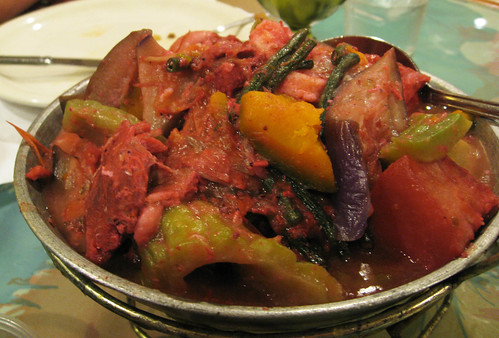 Another dish that was on the menu was Sariwang Lumpia (or Fresh Lumpia). It's a dish that harkens to Vietnamese cuisine where rice wrappers are used to wrap various meats and herbs, dipped in sauce and than eaten, but uses uncooked fresh lumpia wrappers that are thicker and crepe-like. Fillings are generally vegetarian, but can include ground pork or other meats while the sauce is usually made up of soy sauce, garlic, water, cornstarch and sugar.
Another dish that was on the menu was Sariwang Lumpia (or Fresh Lumpia). It's a dish that harkens to Vietnamese cuisine where rice wrappers are used to wrap various meats and herbs, dipped in sauce and than eaten, but uses uncooked fresh lumpia wrappers that are thicker and crepe-like. Fillings are generally vegetarian, but can include ground pork or other meats while the sauce is usually made up of soy sauce, garlic, water, cornstarch and sugar.
One of the dishes that got the most love from the group was the bad, but good for you Crispy Pata. It's simply a pork knuckle or hind leg that is deep fried to golden goodness and comes with a dipping sauce that includes soy sauce, vinegar and garlic. Of course, the best part is the crackling skin, but the pork meat can also be juicy and tender. If you didn't know already, we Filipinos love our pork and the Crispy Pata is definitely a dish you'll generally see ordered at Filipino restaurants.
With 15 dishes, including two types of rice, it was definitely time for dessert. One was Halo-Halo, a Filipino shaved ice dessert, of which there are variations in practically every Southeast Asian country. The word "halo" means mix, so Halo-Halo means mix mix and that definitely describes this dessert. Halo Halo is a mixture of shaved ice and milk (anything from regular milk to evaporated milk to even coconut milk) to which are added various sweet beans, fruits and jellies and served cold in a tall glass or bowl. Sometimes, it's topped with ice cream and even a slice of leche plan (a Filipino version of Spanish/Mexican flan). Generally, you can either eat the ice cream first or mix it all the ingredients together and than use spoon and straw to finish the whole thing off. The Barrio Fiesta version had a scoop of ube ice cream and also a sprinkling of the Filipino version of rice krispies.
The last dessert was the Ube Halaya or purple yam pudding. Ube is a purple yam that is quite prevelant in Filipino desserts from ice cream to cake to rice cakes, etc. This dessert got more of a reaction than the Halo Halo because it was something that most of my friends haven't tried before plus the flavor of the ube was much more concentrated. Unlike a regular pudding, this dessert is actually more paste-like than creamy and is actually quite rich. There's only about 5 ingredients needed for this dish, which includes the ube, coconut milk, evaporated milk, sugar and butter.
So in this one meal, we were able to touch on Spanish, Chinese, Malaysian, Thai and Vietnamese and perhaps, even Indian and African influences and not only that, I was able to showcase Filipino food to those who haven't really been indoctrinated in my cuisine before. I have to say that some of the best comments I heard all night was "I've never seen that before" or "What is that?" The lumpia was easily the most recognized food of the entire evening and even the Pansit Malabon, which is inspired by Chinese noodles, was met with a question mark. Overall, the evening was really about taking those in attendance on a culinary journey and hopefully, that journey has given them a better and deeper appreciation of Filipino Cuisine, but also a willingness to go beyond lumpia and explore what else Filipino food has to offer.
To see pics, go to:
http://www.flickr.com/photos/la_addict/sets/72157617356969304/
Barrio Fiesta
4420 Eagle Rock Blvd
Los Angeles, CA 90041
(323) 259-5826














